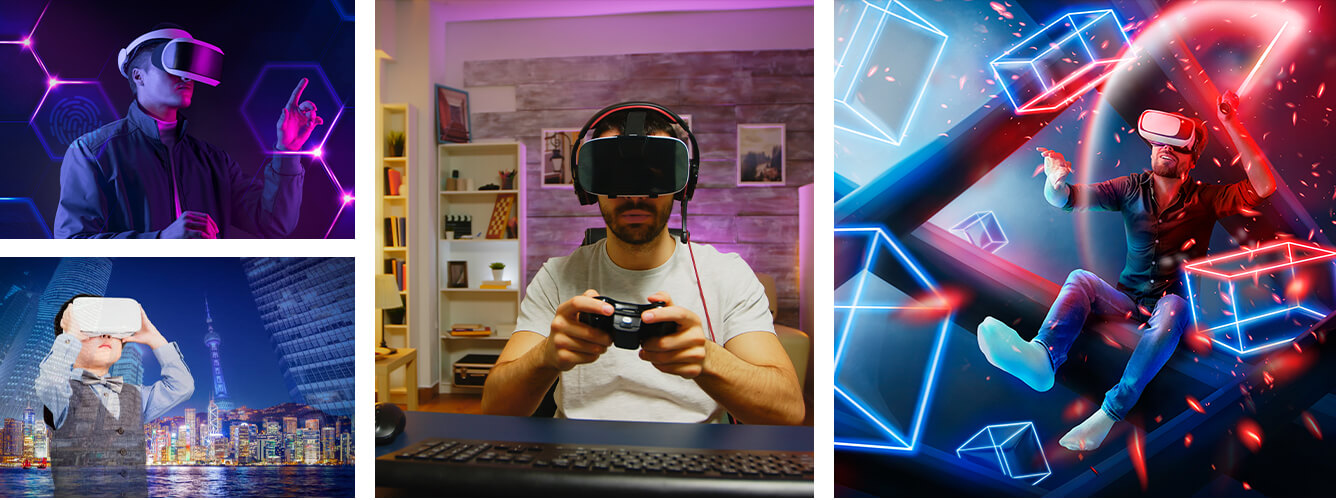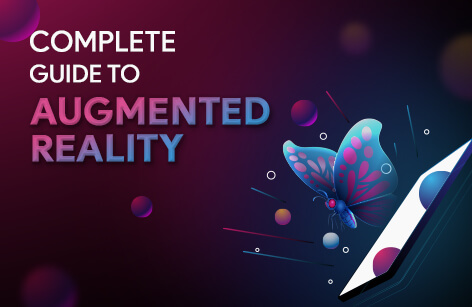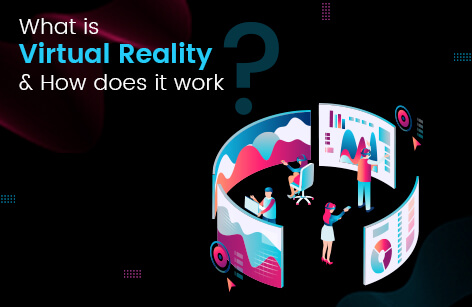Virtual Reality content is all around us, from enthralling special effects in movies to Google Maps. Virtual Reality has seamlessly blended into our daily lives. VR can educate students on how to conduct surgeries and also help improve athletes’ performance. There is no end to its pertinence. But what is VR?
The term Virtual Reality was first coined by an American computer scientist named John Lanier. Virtual Reality is a simulated experience that can be similar ( simulated driving lessons) or different from the real world (video games like Pokemon Go)
The history and rise and of virtual reality
Whenever we hear about Virtual Reality, we think it is a recent concept, but the technology has been around for more than 200 years. In 1838, with the invention of the stereoscope, Charles Wheatstone laid down the foundation of Virtual Reality and 3D. Many small and big inventions followed this in the field.
Subsequent software and technological advancements further aided in developing simulated environments for various uses. One landmark was Sensorama in 1956, followed by the first VR headsets in the 1980s. VR was applied in various sectors, including education, home appliances, health, entertainment, and tourism.
However, consumer adoption of VR and AR content could never truly take off despite these developments. The technology could never become mainstream. Most consumers acknowledged it to be innovative but not entirely necessary until 2020.
Why is vr growing in 2022
Pandemic brought telescopic changes in the lifestyle of people and thus affected the consumer pattern. Pandemic set VR on the slope of enlightenment. According to industry experts, VR had been stuck in a trough of disillusionment. In layman’s words, when the consumer’s interest wanes in existing technology and it slowly starts phasing out, that stage is called the trough of disillusionment.
Pandemic gave rise to a completely digital world of socially isolated clients. This is one of the reasons Why VR is growing in 2022. This kind of world has more use for VR than ever in the history of the world. Hence, VR emerged once again and gained much wider acceptance. In a way, pandemics resurrected the market demand for Virtual Reality.
Future of virtual reality and market statistics
According to the most recent research by Statista, the combined market for AR and VR is expected to reach $296.9 billion by 2024. This is more than ten times the market size of $30.7 billion estimated as recently as 2021. The market is anticipated to develop at a compound annual growth rate of 18% between 2021 and 2028. (Grand View Research, 2021).
Another report by Valuates further claims that the Augmented and Virtual Reality (AR & VR) Market will reach USD 454.73 Billion by 2030 with a CAGR of 40.7%. The expanding market indicates how well-liked the technology is anticipated over the coming few years.
Surprising benefits of virtual reality in 2022
It is clear that the market for VR is expanding, and there is enough scope for Virtual Reality in every field. Here are a few more benefits of VR in 2022

- Technology of the future VR belongs to the future, and in the post-pandemic world, the consumer is looking to see or read things and experience them. For example, in the restaurant business or tourism sector, clients can travel virtually to those locations while tasting dishes from these locations.
- The new socially isolated worldThis is a new, virtually connected but physically isolated world. Virtual Reality has the unexplored but plausible power to enable people to work closely together regardless of location. Hence, there are a lot of opportunities to be exploited and profits to be made.
- VR in Entertainment, Sports, and Gaming industryIn 2018, the German theme park Europa-Park installed VR roller coasters named Eurostat Coastality, letting guests experience a universe inspired by the movie Valerian. Virtual Reality is expected to be widely used in the entertainment, gaming and sports industry.
- Education, Health, and other sectorsVR has been used in the education and health sectors for a long time now. For example, VR can be employed to help students with learning difficulties by using visuals and sensory simulation. Companies like Google and other adventures are heavily investing in VR tools. In the medical sector, VR can be used to teach students to cut down expenses and reduce the risk of patient mortality. Besides this, VR has potential in other sectors like defense, architecture, and infrastructure.
Today, VR is the technology with the highest projected growth potential and immense profitability. It has many facets and applicability and far less saturation or competition. Healthy and smart investments and innovation can surely return good.






